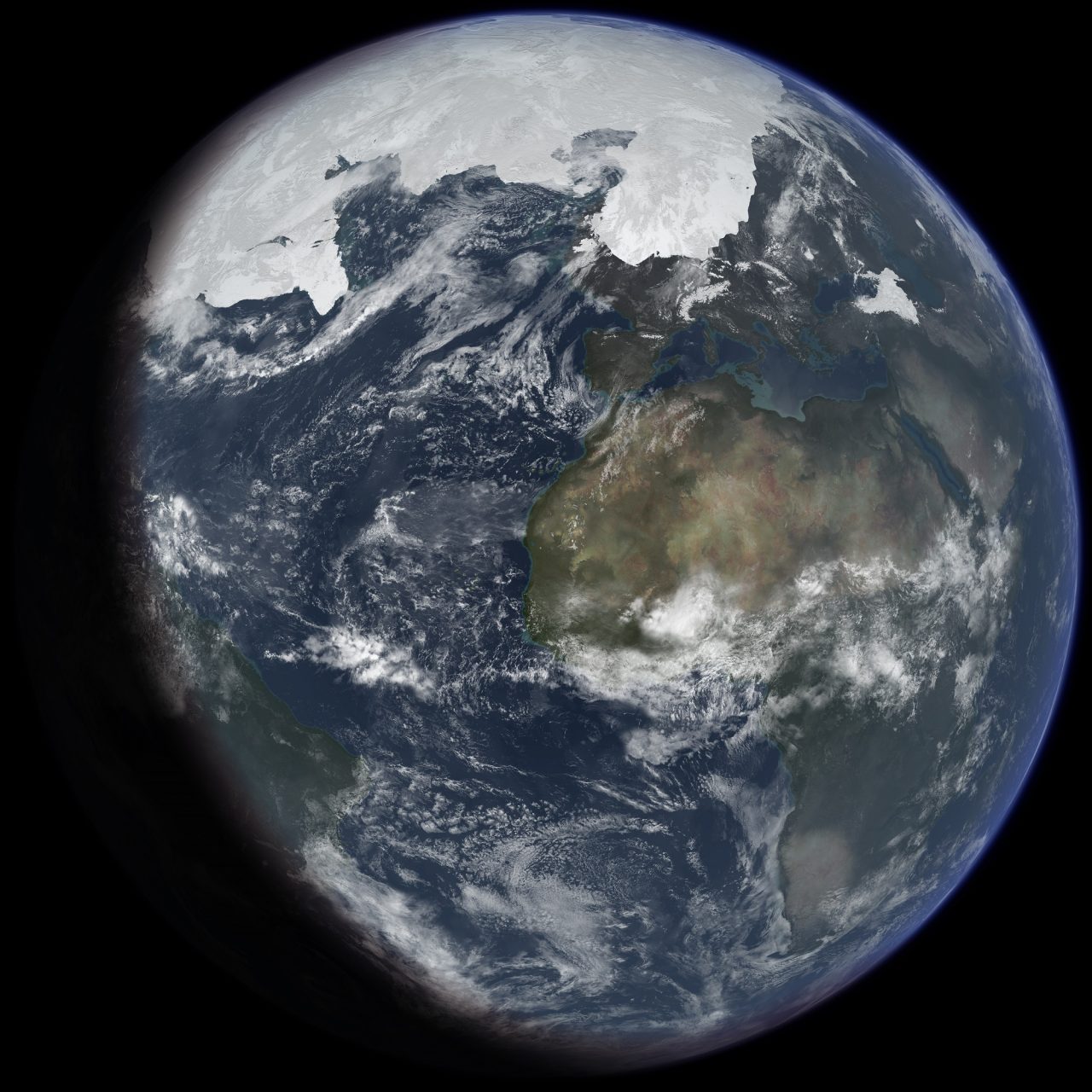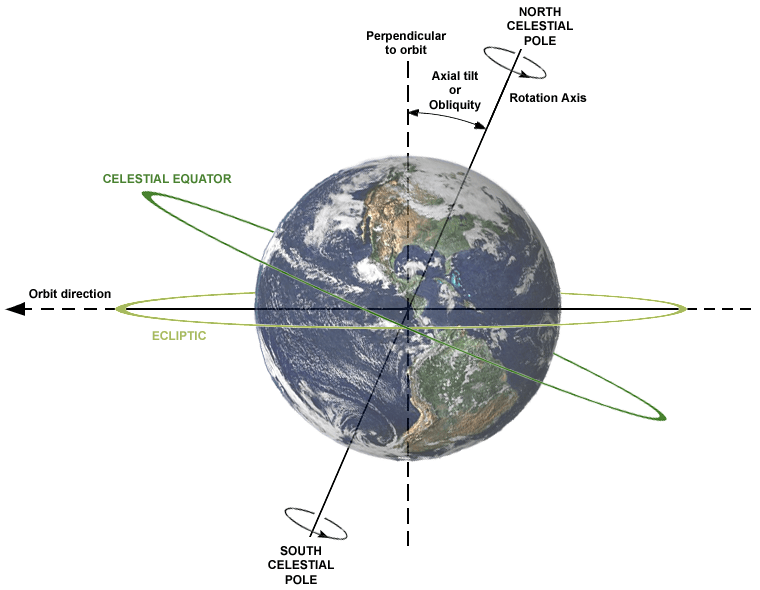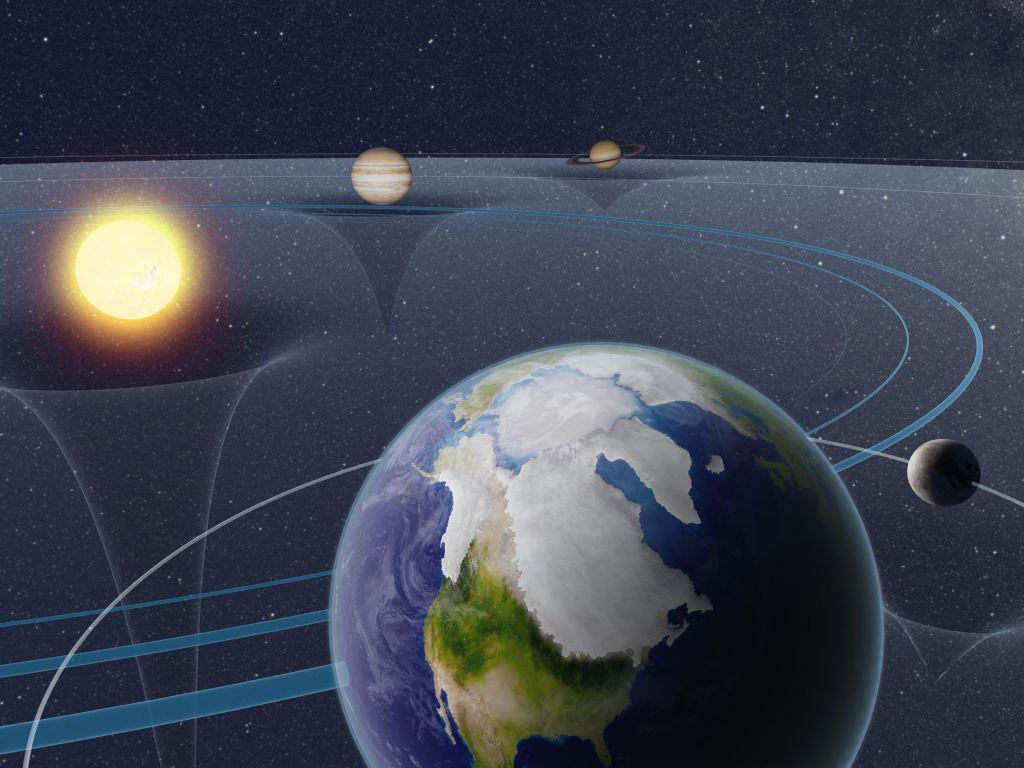Earth experiences seasonal changes because of how its axis is tilted (23.43° relative to the Sun’s equator), causing one hemisphere to always be tilted towards the Sun (and the other away) for different parts of the year. However, because of gravitational interactions between the Earth, Sun, Moon, and other planets of the Solar System, Earth has experienced changes in its orientation (obliquity) over the course of eons. This has led to significant changes in Earth’s climate, particularly the recession and expansion of ice sheets due to significant variations in the distribution of sunlight and seasonal changes.

These warming and cooling periods are known as interglacial and glacial periods (“ice ages”). Another interesting change is how the glacial-interglacial cycle has become slower with time. While scientists have long suspected that astronomical forces are responsible, they have only recently been able to test this theory. In a recent study, a team of Japanese researchers reproduced the cycle of glacial periods during the early Pleistocene Epoch (1.6 to 1.2 million years ago) using an improved computer model that confirmed astronomical forces were responsible.
The team consisted of researchers from the Atmosphere and Ocean Research Institute (AORI) at the University of Tokyo, the Meteorological Research Institute (MRI-JMA), the National Institute of Polar Research (NIPR), the Japan Agency for Marine-Earth Science and Technology, the Center for Computational Astrophysics (CfCA-NAOJ), and the Planetary Exploration Research Cente (PERC-CIT). The team’s paper appeared in the May 15th issue of Communications Earth & Environment (a journal published by Nature).

 Earth’s axial tilt (or obliquity) and its relation to the rotation axis and plane of orbit. Credit: Wikipedia Commons
Earth’s axial tilt (or obliquity) and its relation to the rotation axis and plane of orbit. Credit: Wikipedia Commons
For the past 450,000 years, Earth’s glacial-interglacial cycle has had a period of about 100,000 years – with glacial periods lasting between 70 to 90 thousand years and interglacials lasting 10,000. However, for 800,000 years during the early Pleistocene (from 1.6 to 1.2 million years before the present date), the cycle had a more rapid period of about 40,000 years. Using state-of-the-art computer simulations, the team considered the impact of astronomical forces on Earth’s glacial-interglacial cycle and compared these results to the geological record.
Takashi Ito, a researcher from the CfCA and a co-author on the paper, led the discussion on astronomical forces. As he explained in a CfCA press release, “The numerical simulations performed in this study not only reproduce the Pleistocene glacial-interglacial cycle well, but also successfully explain the complex effects of how astronomical forcing drove the cycle at that time. We can regard this work as a starting point for the study of glacial cycles beyond the present-day Earth.”
In addition to replicating the cycle of this earlier period, the team’s analysis of the simulations revealed three salient facts about the mechanisms governing climate change. Specifically, they found that the timing of major changes in the cycle was directly associated with certain astronomical phenomena. They included how:
- Small differences in the variation of the spin axis’ orientation and the orbit of the Earth have a deterministic effect on the glacial cycle.
- The onset of an inter-glacial period is also affected by periodic changes in Earth’s axial tilt. But it is mainly determined by the position of the summer solstice in Earth’s orbit at perihelion.
- The duration of an interglacial period is determined by both changes in Earth’s spin axis orientation and the position of the summer solstice.

Artist’s impression of how astronomical forces affect the Earth’s motion, climate, and ice sheets. Credit: NAOJ
This study could have significant implications for Earth science, as it demonstrates that one of the most important forces governing major shifts in our planet’s climate has changed over time. This could lead to a better understanding of how Earth’s climate evolved, where astronomers can determine the extent of glaciation by applying the three big takeaways from the team’s analysis. Given the importance of glacial-interglacial cycles on the evolution of life here on Earth, the results could also have implications for the study of extrasolar planets and the search for life.
In short, by knowing the dynamics of a distant solar system, astrophysicists and astrobiologists could place tighter constraints on an exoplanet’s present habitability. In the meantime, the results of this study could be an important step towards a greater understanding of Earth’s geological evolution. “As geological evidence from older times comes to light, it is becoming clear that the Earth had a different climatic regime than it does today,” added Ito. “We must have a different understanding of the role of astronomical forcing in the distant past.”
Further Reading: CFCA, Nature Communications Earth & Environment








